Reflective Optics
Reflective optics refer to optical systems that use mirrors to reflect and focus light. Essentially, reflective optics involve the use of mirrors–smooth, reflective surfaces that change the direction of a wavefront. This technology is a fundamental component in various applications, ranging from everyday devices to advanced scientific instruments.
While all mirrors reflect light, the nature of the reflection depends on the mirror’s shape and sometimes the distance between the mirror and the object being reflected. In high-performance optical systems, particularly in precision optics, “first surface mirrors” are preferred and most commonly used. These mirrors have a high-reflectance coating applied directly to the front surface of various substrates, such as glass, metal, or semiconductors.
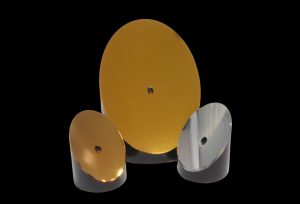
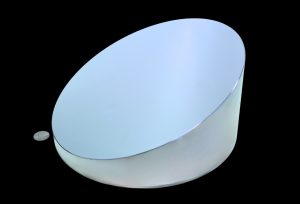
Key Principles
- Reflection: Reflective optics rely on the reflection of light off of mirror surfaces. The angle of incidence equals the angle of reflection, enabling precise control over the direction of light passing through.
- Focusing: By shaping mirrors, typically into parabolic or spherical forms, light can be focused onto a point or line. Parabolic mirrors, for instance, converge parallel rays of light to a single focal point.
- Aberration Control: Reflective systems can be designed to minimize optical aberrations, such as chromatic aberration, because they do not disperse light into its constituent colors as refractive (lens-based) systems do.
Reflective Optics Applications
- Telescopes: Most modern telescopes, such as Newtonian and Cassegrain telescopes, use reflective optics to gather and focus light from distant stars and galaxies, such as the primary mirror of the James Webb Space Telescope.
- Microscopes: Reflective optics are employed in certain types of microscopes, particularly those designed for infrared or ultraviolet light, where lenses would otherwise absorb such radiation.
- Cameras: Some high-end cameras and specialized photographic equipment use mirror lenses.
- Laser Systems: Reflective optics are crucial in laser applications, where precise control over light paths is essential.
- Scientific Instruments: Reflective optics are found in instruments like spectrometers and interferometers, which are used for detailed light analysis.
Advantages
- No Chromatic Aberration: Since mirrors reflect all light wavelengths equally, reflective optics do not suffer from chromatic aberration.
- Broad Wavelength Range: Reflective systems work over a broad range of wavelengths, from ultraviolet to far infrared.
- Durability: Mirrors, particularly those with protective coatings, can be more durable and easier to maintain than lenses.
General Specifications of Optical Coatings
Material | Specifications | |||||
|---|---|---|---|---|---|---|
Substrate | Surface Figure | Surface Quality | Chamfer | Coating Material | Clear Aperture | |
Copper | Fused Silica, H-K9L, etc. | – | 40-20 | 0.5mm, 45° | Ag, Al, Cr, etc. | > 90% of diameter |
Silver | Fused silica, BK7 | < λ/10 @ 632.8nm | 40-20 | 0.5mm, 45° | Silver | > 85% of diameter |
Aluminum | Fused silica, BK7 | < λ/10 @ 632.8nm | 40-20 | 0.5mm, 45° | Aluminum | > 85% of diameter |
Germanium | Germanium, ZnSe, etc. | – | 40-20 | 0.5mm, 45° | ZnS, YbF3, Ge, etc. | > 90% of diameter |
MgF2 | Fused Silica, H-K9L, etc. | – | 40-20 | 0.5mm, 45° | Al2O3, SiO3, HfO2, Ta@O5, etc. | > 90% of diameter |
Gold | Fused silica, BK7 | < λ/10 @ 632.8nm | 40-20 | 0.5mm, 45° | Gold | > 85% of diameter |
Chromium | Fused silica, BK7 | < λ/10 @ 632.8nm | 40-20 | 0.5mm, 45° | Chromium | > 85% of diameter |
Silicon Dioxide (SiO2) | – | PV<λ/4 | 60-40 | 0.2mm, 45° | – | >90% of diameter |
Titanium Dioxide (TiO2) | – | PV<λ/4 | 60-40 | 0.2mm, 45° | – | >90% of diameter |
Fluorides | – | PV<λ/4 | 60-40 | 0.2mm, 45° | – | >90% of diameter |
Dielectric Coatings | – | PV<λ/4 | 60-40 | 0.2mm, 45° | – | >90% of diameter |
* Dielectric coatings are more flexible but cannot be used over as broad a wavelength of light as metal coatings, however, and must be designed for specific narrow spectral bands, usually in the visible and NIR region.
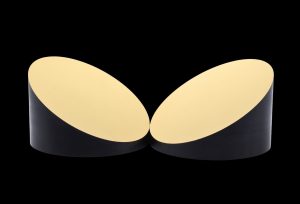
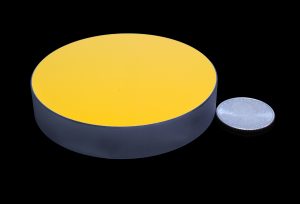
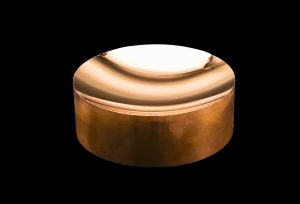
Custom Reflective Optics at Avantier
Reflective optics are indispensable in various fields due to their ability to precisely control light paths and minimize optical aberrations. From telescopes capturing the vastness of the universe to high-end cameras and scientific instruments, these systems play a crucial role in advancing technology and research. Avantier boasts over 60 years of experience in designing and manufacturing in-stock and custom reflective optics. Our custom reflective coatings offer superior reflectivity, uniformity, durability, and longevity, ensuring our products meet the highest standards of performance and reliability. With Avantier’s expertise, you can trust in the quality and precision of our reflective optics for all your advanced optical applications.
WE CAN HELP YOU!
Contact us NOW for sales & expert advice.

